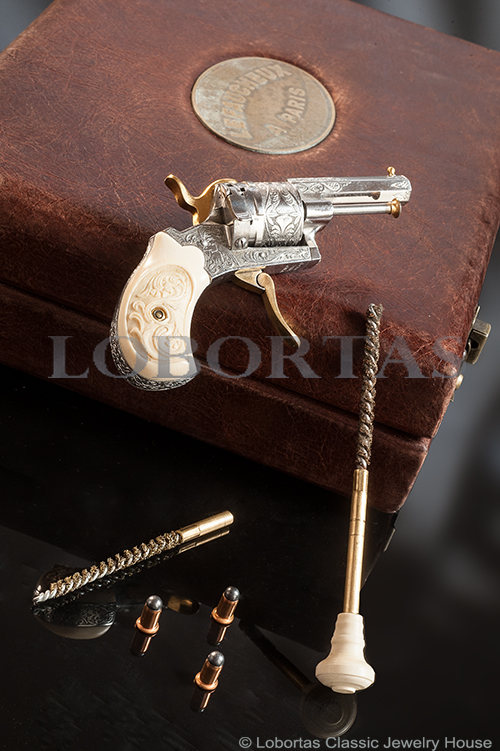

Casimir's fixed ammunition eliminated this step along with the need for a pan and was thus a significant improvement. He then had to ram a spherical lead ball down each barrel. The gunman was then required to fill the barrels with a measure of powder. In order to reload a pepperbox, the barrel cluster needed to be removed. This was a slow process but still faster than continuously reloading single shot pistols.Ĭasmir Lefaucheux's ammunition further improved this early style revolver in terms of its loading which was another serious disadvantage. In addition, the gunman would need to recharge the pan and re-cock the hammer. The cluster was unlocked turned by hand, and then locked into position upon each firing. This distinctive style weapon had six barrels rotating around a central axis. He patented a "pepperbox revolver" in 1846. The increased momentum would eventually belittle the big bore arms such as the Enfield rifle-musket which had large calibers (.577) to make up for the loss of propellant.Ĭasmir Lefaucheux advancements in weaponry did not end with fixed ammunition.

This significant advancement led the way to much more powerful weapons.

As a result of this seal, the propellant gas had no means of escape besides through the barrel behind the bullet. The base expanded under pressure of the propellant gas and thus sealed the gap between the chamber and the breechblock. The Lefaucheux cartridge was composed of a cardboard body with a brass base. Lefaucheux's improvement to fixed ammunition (a case containing cap, primer, propellant and tipped with a bullet) was significant because it was the first example that solved the problem of breech obturation to prevent gas escaping. He patented this new style ammunition that was loosely based on the same principles of Johann Nikolsaus Dreyse's needle gun system. It was this year that a Parisian gunsmith by the name of Casimir Lefaucheux produced the one-part pin-fire cartridge. The story of the Lefaucheux revolver actually dates back to 1832. Confederate records suggest that 1,000-1,200 Lefaucheux's were purchased. Of these, 12,000 were of the Lefaucheux design. Although 90 percent of the revolvers supplied were American made by Colt, Remington and Starr there were still 14,000 pistols purchased in Europe. Ordnance records show that 359,000 revolvers were purchased in this country. What sets this weapon apart from most of the other revolvers issued was that it was a pin-fire model. One of the more irregular weapons that were purchased by both the Union and Confederate Armies during the Civil War was the Lefaucheux Revolver. As a result, one can amass a relatively large collection of various models. However, there was really no official side arm. The most popular revolver during the Civil War by both sides was without a doubt the Colt Army and Navy models. (Originally Published in the Civil War Courier)


 0 kommentar(er)
0 kommentar(er)
